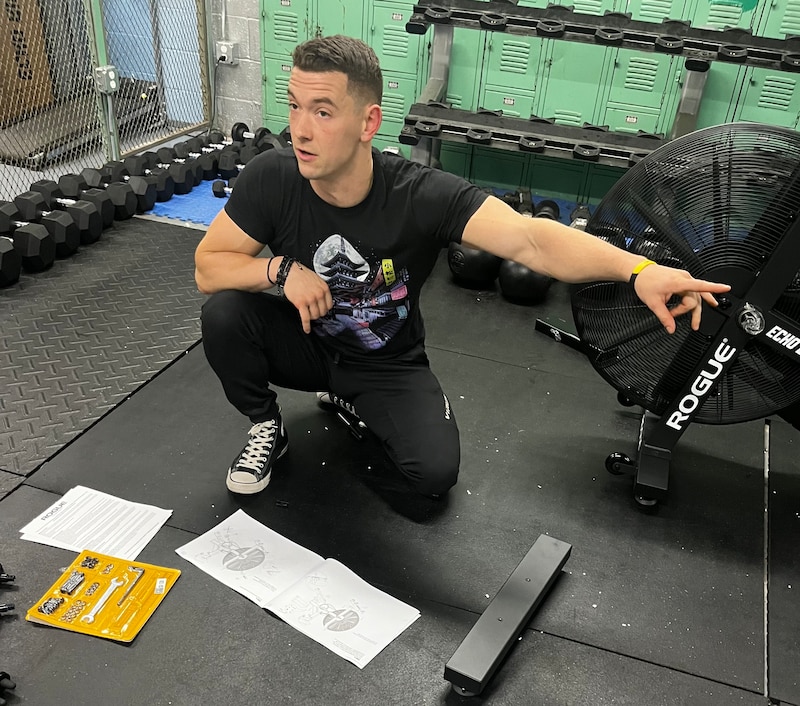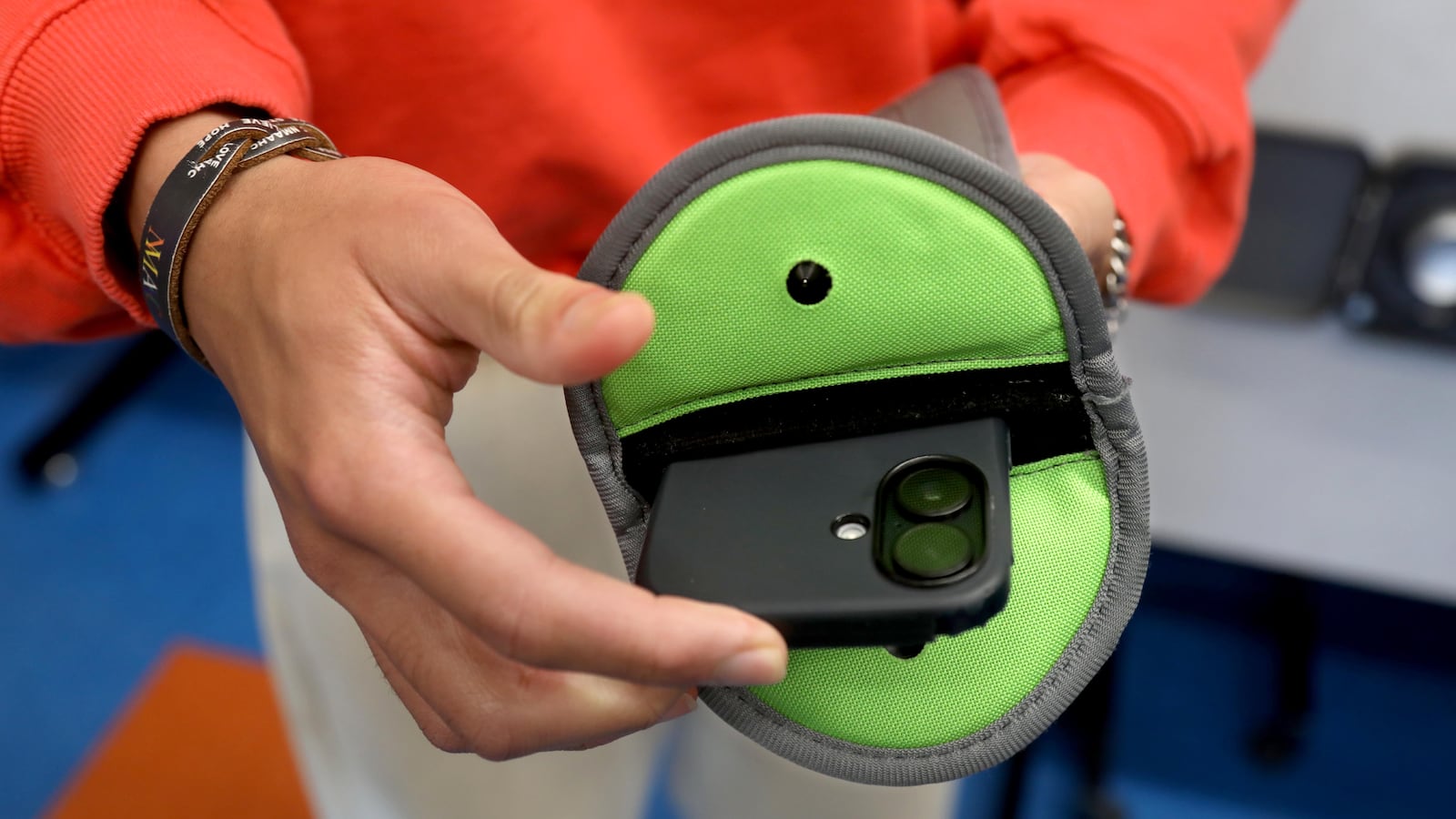“Screen time check!” I barked at my health class.
My students sighed, took out their phones, and opened their screen-tracking applications.
“Patricia, how much yesterday?”
Patricia said, “12 hours.”
I whistled. “Okay, how about you, Larry?”
Larry said, “Eight hours. See, I’m way better than Patricia.”
“Shut up!” Patricia replied.
I patted the air with my hands to indicate they should calm down.
“What about you, Manuela?”

“Seventeen hours.”
“What?”
“Seventeen hours. Yeah, mista, it was a Sunday. I didn’t have much else to do.”
I sighed and went around the room getting a quick read on how much screen time each student had accumulated. The class average neared 11 hours.
I said, “Let’s suppose you sleep eight hours a day. That means you’re awake for 16 hours a day. If you’re on your phone for 12 hours, that means you only spend 4 hours not looking at a tiny screen. Is that really how you want to spend your life?”
Most of the kids just shrugged.
Then one kid said, “What else is there to do?”
That’s how I knew we were in trouble.
That exchange happened around two years ago, back when our school had “banned” phones, but kids were still allowed to carry them in their pockets. The policy was effectively useless. The moment a teenager felt a vibration in their pocket, a command from Satan himself wouldn’t stop them from checking their screen.
The year after that, we tried Yondr. Some company called Yondr had created an “unbreakable” pouch that we required students to slip their cell phones into before the first bell. Then we would use a magnet to engage a locking mechanism so they couldn’t access them. The students would carry the pouches around with them, and we would unlock them at the end of the day. This way, students could still “have” their phones, but they couldn’t access them.
Our kids are smarter, more social, and more motivated to do the things they actually want to accomplish in this world when they don’t have a Pavlovian vibration derailing their attention every 20 seconds.
This worked initially. On the first day of school, a senior mentioned to me that he had “resigned himself to a year of boredom.” He had said this while idly looking at his pouched phone. For three days, teachers enjoyed bliss. The ability to teach without saying the words “put your phone away” was something some teachers hadn’t experienced in over a decade.
Then the kids started getting creative. You see, even though they couldn’t access their phone, they still felt the dopamine burst whenever they felt a vibration go off in the pouch. They had to know. They had to see. It drove them mad. Students started taking pens and stabbing through the fake Kevlar pouches. Other kids started using their keys to saw off the locking mechanism. Others still would bring two phones to school. They would let the dean watch them pop their old phone into the pouch at entry, and keep their main phone in their backpack until the coast was clear.
One kid even got entrepreneurial about it. He went on Amazon and bought the magnet that unlocked the phone pouches for $50. Then he charged kids a dollar every time they wanted to unlock their phone. The kid had made a tidy profit by the time the school confiscated the magnet. Silicon Valley has made a product so addictive that a kid created a new economy within our school to help kids manage that addiction.
Luckily, this school year has been different because students must hand in their phones at entry, or we will immediately call their parents. The phones are plugged into safe boxes that the students aren’t allowed to access until the final bell has rung. There are no constant vibrations reminding you that you’re missing out on something, and there are no pouches to rip.
The consequences for smuggling your phone past entry are high. Immediate detention, a call home to parents, and a personal visit from the dean mid-class. There was some pushback in the beginning. But we teachers stuck to our guns, calling the dean the moment we saw any kid with tech. That included AirPods, Apple watches, iPads, and anything you could use to connect to the internet.
One kid smuggled three separate school iPads into her backpack, so when she got caught with one, she would wait and just pull out the next. When we discovered her “trick,” she received reductions in her classwork grades, phone calls home, and several detentions.
Every kid who tried to push the boundaries received the same kind of consequences from us every single time. The students eventually accepted their fate. This year, they would have to go through school without an entertainment system in their pocket.
The results have been spectacular.
Students talk to each other between classes. The cafeteria is full of conversation. Teachers cover the material faster. Cyberbullying has fallen. When a fight happens, half the school doesn’t immediately run out of the classroom to watch. Mindless doomscrolling happens on their time, not school time. Boys can’t watch porn in the bathroom (or the cafeteria). I don’t have to fight an impossible war against the greatest behavioral psychologists Silicon Valley has ever employed.
Here’s a typical scenario in my gymnasium. A student is seated with their back against the wall, and they don’t want to participate. I choose one of my various talking points: “You know participation is how you pass my class, right?” “You know you have to pass this class to graduate.” “All you have to do is try; I’m not asking for a serious feat of athleticism.” “Exercise is good for the soul, man.” “Your team needs you.”
Or my personal favorite exchange:
“Do you like math class?”
“No.”
“But you have to do it right?”
“Yes.”
“Same deal here. You have to do it, even though you don’t want to.”
“But I’m not feelin’ it.”
“Yeah. I know. But guess what, do you think I was feelin’ it when my alarm clock went off at 5 a.m.? Do you think I was feelin’ it when I took an hour and 20 minute commute on the train?”
“What? You love it here, though. You’re always so loud. You’re always so enthusiastic. You’re so extra all the time.”
I gave a lopsided grin. “That’s because I’m faking it. It’s the most adult skill you have to learn how to do. You have to learn how to do the things you don’t want to do,” I said.
Last year, a student would listen to my pleas, say they would get up, and then immediately get back on their phone. Why would you play in the gym when you could sit against the wall and watch endless entertainment algorithmically curated just for you?
Now I battle boredom, and that’s a winnable fight. I’m not fighting against brilliant social scientists getting paid to figure out ways to capture human attention, I’m fighting against sitting on your butt doing nothing. And my class is awesome compared to boredom.
Now, don’t get me wrong. Banning phones in school won’t save Gen Z. I once watched our dean hand cell phones back to students in the cafeteria. When she rolled the cell phone cart through, it was like watching a crowd of hyenas catch the scent of stinking flesh. Kids stopped conversations mid-sentence and lifted their heads to watch that cart roll by.
The moment a boy got up from his table, a storm of students jumped to their feet to beat him to the cart. The dean started screaming, “If you come near me without being called up, you’ll go to the back of the line.” It took 10 full minutes to get everyone seated before she felt comfortable enough to call kids up, table by table.
That’s the kind of addiction teachers are dealing with. The kids are not all right, whether or not we ban the phones.
But when I compare the seven years battling the cell phone in the classroom vs. almost an entire year of phone-free schooling, there is no comparison. Our kids are smarter, more social, and more motivated to do the things they actually want to accomplish in this world when they don’t have a Pavlovian vibration derailing their attention every 20 seconds.
Bring on the phone-free school legislation. New York State just passed a “bell to bell” cell phone ban. We should enforce it. We should make it nationwide. Teachers need it, but the kids need it more.
Gilbert Schuerch is a high school P.E. teacher and a strength and conditioning coach who has worked in Harlem, New York, for the past eight years. He writes the Substack Fit To Teach, where a version of this post originally appeared, and where he shares his stories about teaching in a Title I school and his opinions on education.


